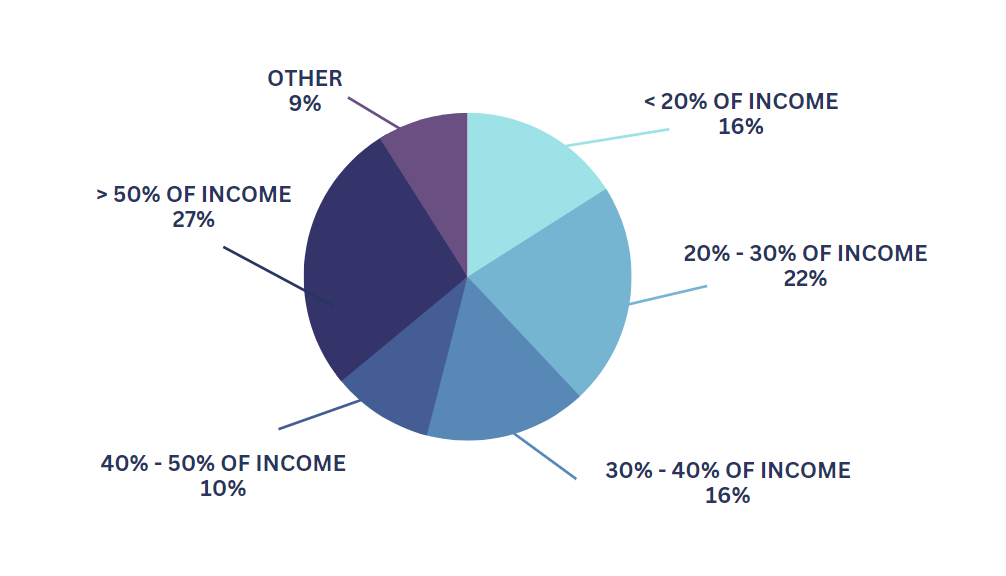Prioritizing Housing on the Path to Prosperity in Florida

Percentage of Floridians by share of their income spent on housing
Prosperity for all Floridians begins with the availability and affordability of basic needs, as access to resources such as food, health care, and shelter provide the stability needed to move out of poverty. The housing market, in particular, is an important gauge for the economy as a whole, and the percentage of Floridians who are living burdened by housing costs is an indicator of how many people are facing obstacles on the pathway out of poverty.
A “Housing Cost Burdened” household is recognized as one that spends over 30% of its income on rent. Most recent statistics show that this is the reality for 56.8% of renters in Florida, many of whom are people living in poverty.
As people in poverty continue to spend close to a third of their income on housing, resources tighten in other areas related to poverty, such as food and childcare. Additionally, a lack of affordable housing in a community contributes to a lack of stability for children who experience multiple moves based on burdensome, rising housing costs, which greatly impacts the likelihood of excelling in school.
Affordable workforce housing is an important factor that contributes to the vibrancy of an economy and its people. As an economy flourishes, it attracts new residents and businesses that provide job opportunities. When housing is affordable, workers can live closer to their jobs, providing additional time for community and family activities. This foundation is essential for children to thrive academically, adults to excel in the workforce, and families to limit the likelihood of being impacted by the other root causes of poverty.
To unite with the Florida Equality of Opportunity Initiative in its efforts to improve access to health resources on the path to prosperity in Florida, contact Zenani Johnson at zjohnson@flchamber.com.